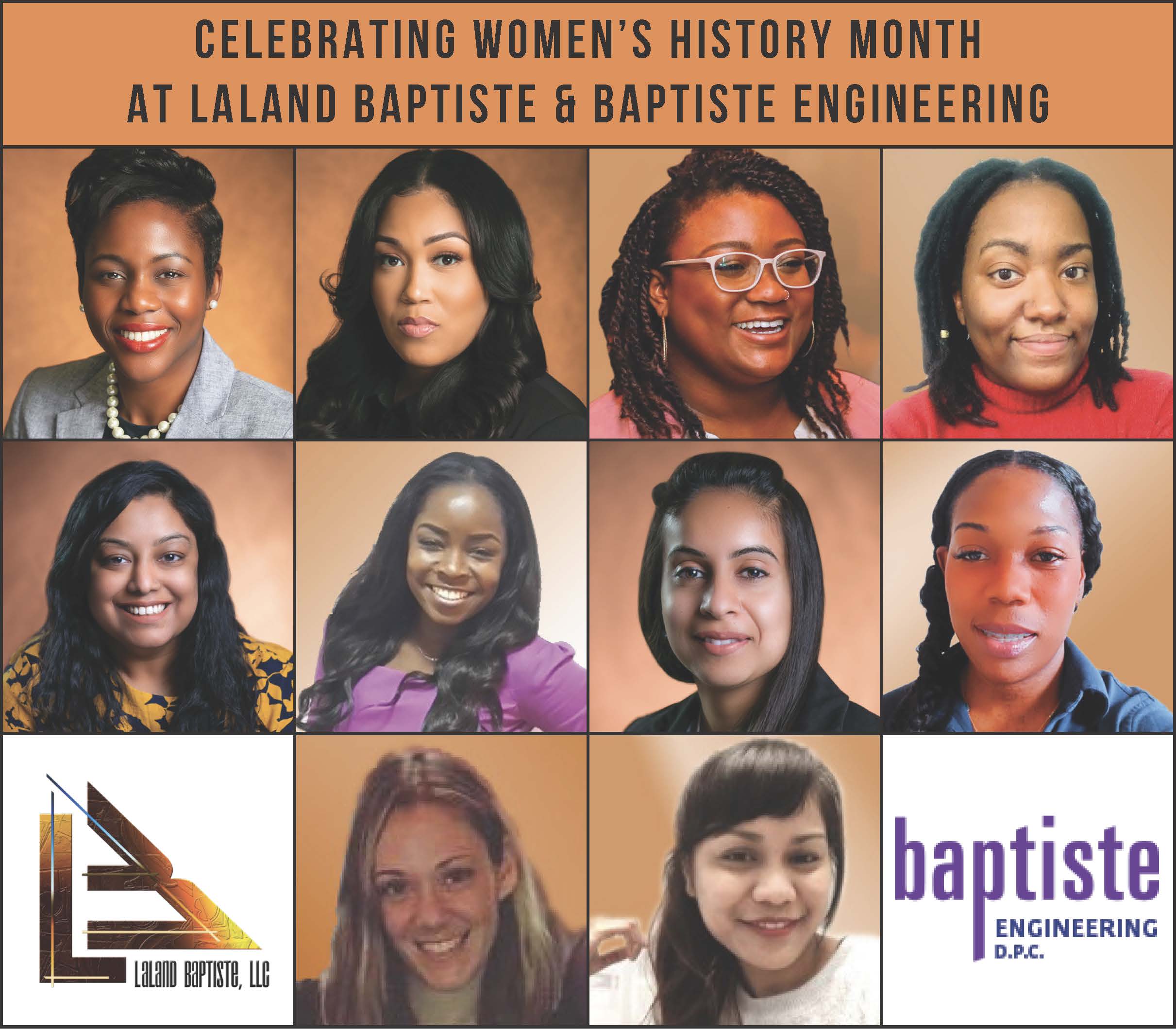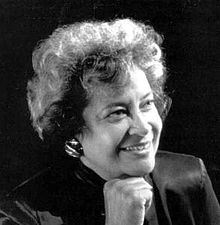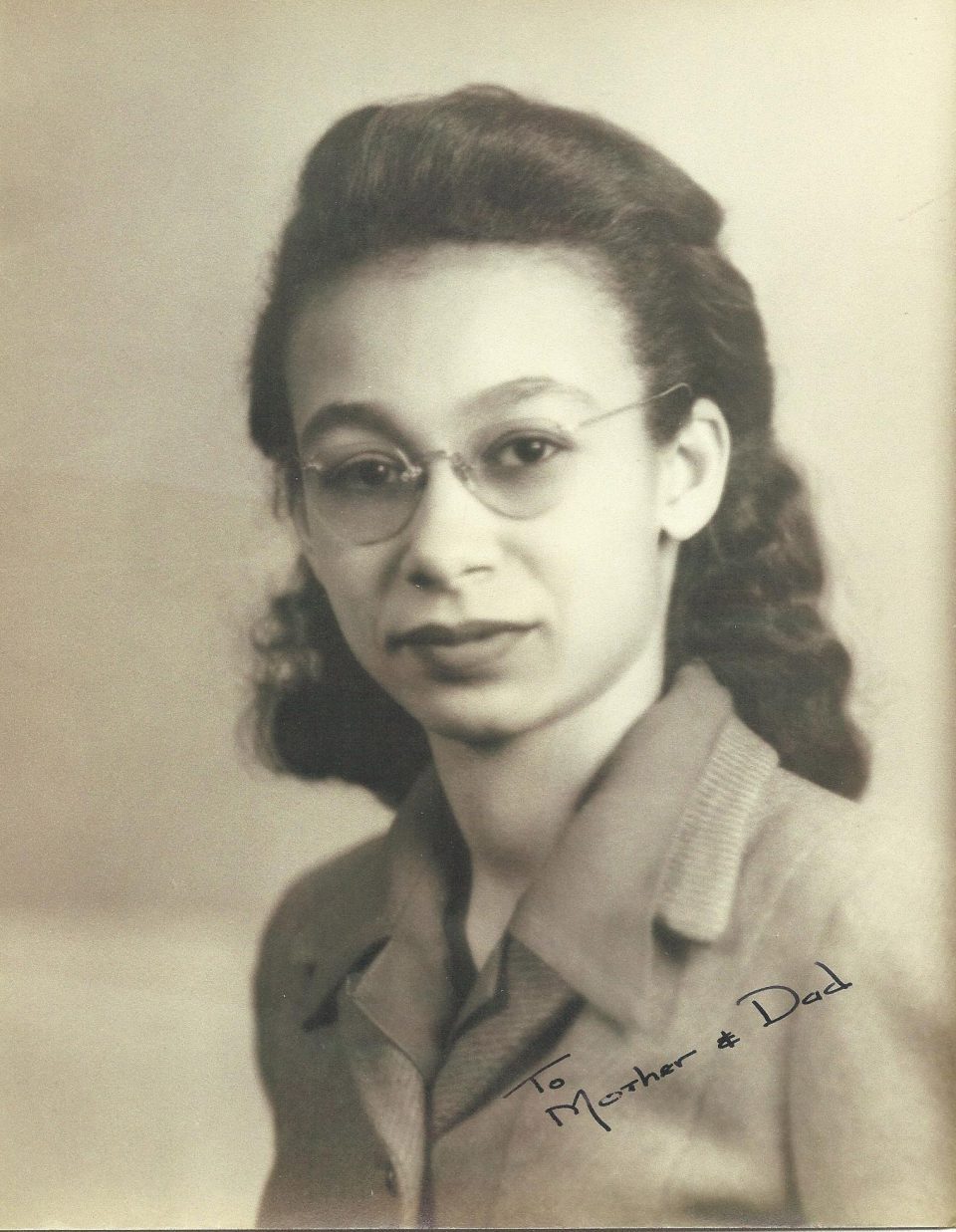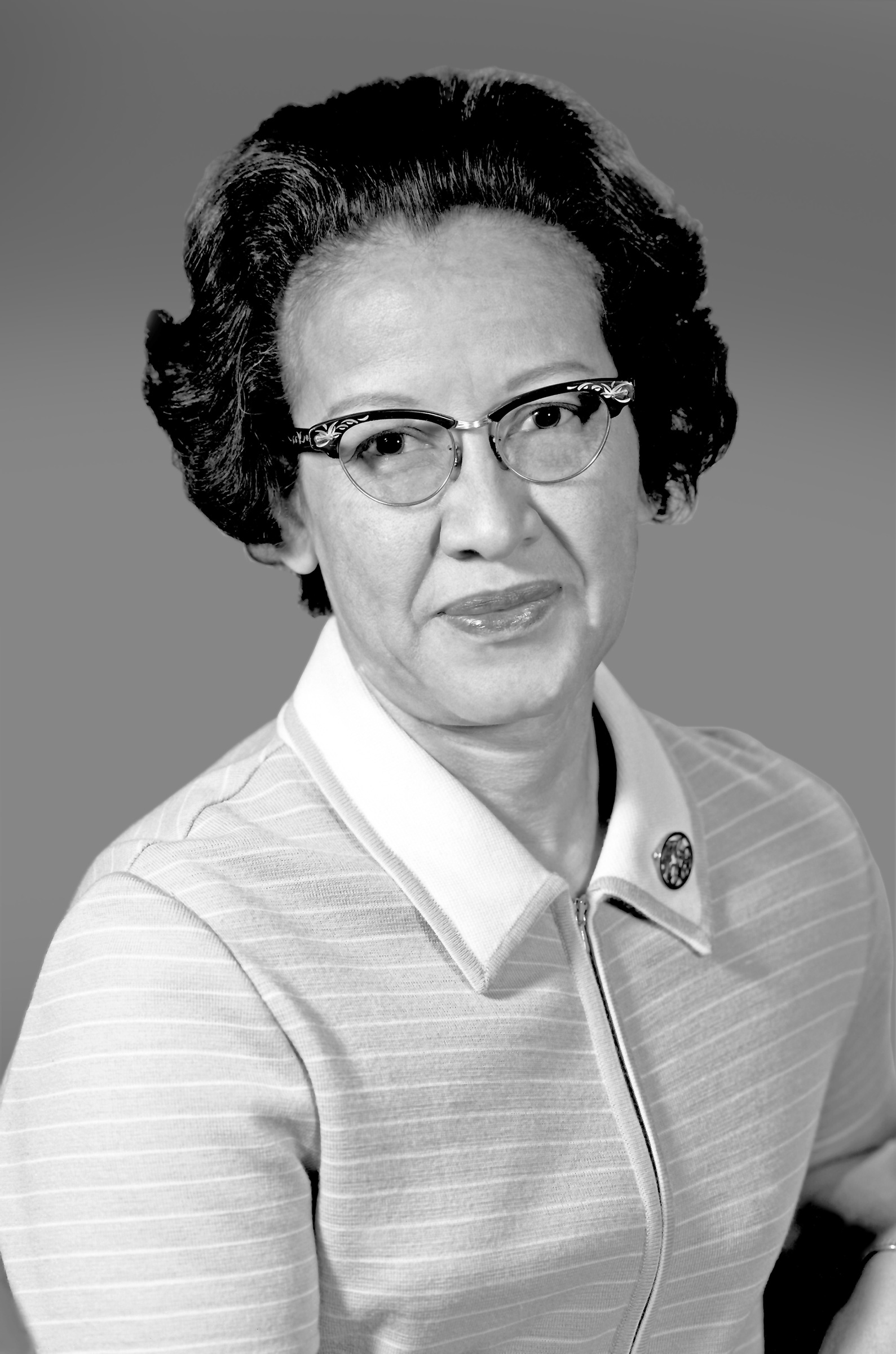Celebrating Women’s History Month 2021
In recognition of Women’s History Month, we’d like to share some of the amazing women that have contributed to the AEC industry.
Our Amazing Employees
Thankful and proud of all the strong, diverse and hardworking women who work at Laland Baptiste and Baptiste Engineering. “There’s power in allowing yourself to be known and heard, in owning your unique story, in using your authentic voice.” ~ Michelle Obama
Photo Credit: Click Here
Norma Merrick Sklarek
Known as the “Rosa Parks of architecture,” Norma Merrick Sklarek became one of the first female architects in the U.S. After graduating from Columbia’s architecture school in 1950, Sklarek landed a job designing bathroom layouts for the NYC Department of Public Works. Being highly overqualified for the work she was doing, she moved on to work for Skidmore, Owings & Merrill. Some of Sklarek’s major projects include the U.S. Embassy in Tokyo, Japan, Terminal One at the LAX, and the Mall of America in Minneapolis, Minnesota.
Citation: Morton, P. (2021). Norma Merrick Sklarek (1271793800 939262073 M. McLeod & 1271793801 939262073 V. Rosner, Eds.). Retrieved March, 2021, from https://pioneeringwomen.bwaf.org/credits/
Photo Credit: Click Here
Georgia Louise Harris Brown
Georgia Louise Harris Brown was the first African American woman to earn a degree in architecture in 1944. In 1949, she became the second professionally licensed black female architect in the nation! During her college career, Harris Brown studied under the famous Ludwig Mies van der Rohe during his prime.
Harris Brown had many prominent projects in the U.S., and after moving to Brazil in 1953, was accepted by the Engineers and Architects Regional Council, allowing her to lead many architectural projects over the next two decades.
Citation: Falbel, A. (2021). Georgia Louise Harris brown. Retrieved March, 2021, from https://pioneeringwomen.bwaf.org/georgia-louise-harris-brown/
Celebrating Black History Month 2021
In recognition of Black History Month, we’d like to share some of the amazing individuals that have and still do contribute to our society.
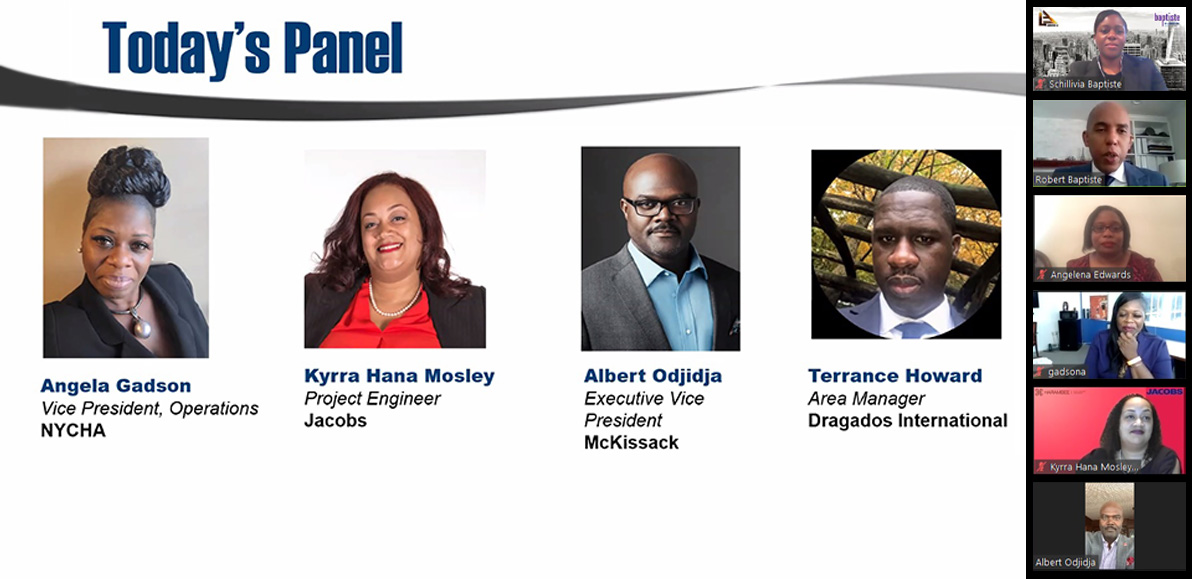
Robert Baptiste – CMAA Panel Discussion
Robert Baptiste, director of C.O.D.E (Creating Opportunities for Diversity and Equality) helped to arrange and moderate the CMAA Metro NY NJ panel discussion on February 11th: Contributions of Minorities and Women in Construction presentation. It was a great event and an inspiration to continue to make Black History…NOW!
Relevant topics from barriers that women and minorities encounter in the AEC industry; changes in the next 5-10 years that will affect how the way AEC firms operate and how minorities can prepare for this shift; constructive changes and actions of leadership that can foster an inclusive, inviting, and productive environment; and how we can design, build and manage a better AEC industry as we witness changes occurring across the globe in: social injustice, pay inequalities and healthcare.
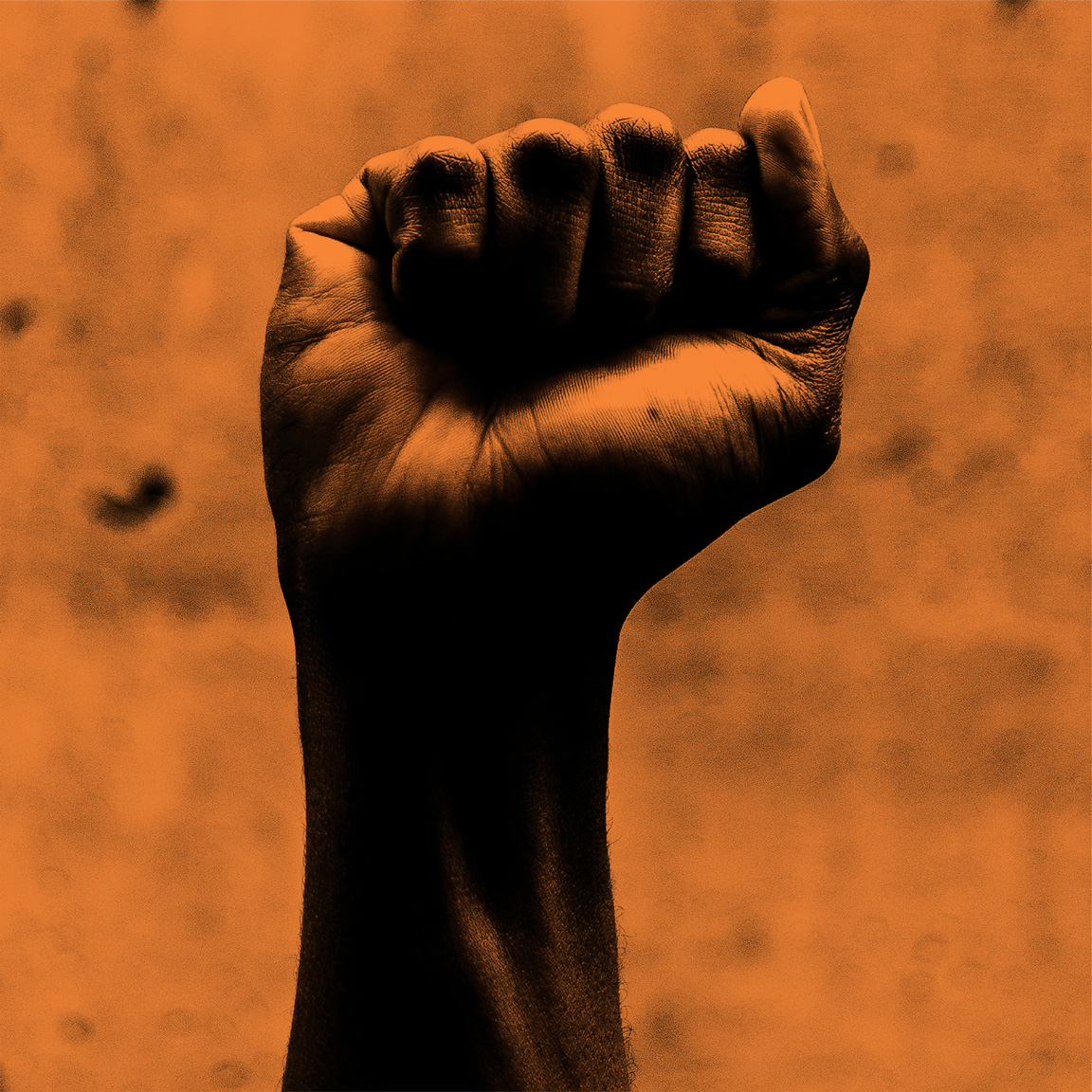
2021 Resources
Here are a few resources to help you explore more during this years Black History Month.
Ask your smart device to, “Open Black History facts” Amazon’s Alexa Skill will deliver daily facts from talented voices that are passionate about sharing relatable Black History Month inspiration.
For the month of February, Spotify is recognizing and uplifting the rich history of voices of the Black community through guest-curated playlist takeovers, brand-new podcasts, and more.
With the NYC Parks Virtual Exhibit
you can learn more about Black culture and history in New York City and the parks that tell their stories.

Photo Credit: Click Here
Garrett Morgan
Garrett Morgan blazed a trail for African American inventors with his patents, including those for a hair-straightening product, a breathing device, a revamped sewing machine and an improved traffic signal.
With only an elementary school education, Garrett Morgan began his career as a sewing-machine mechanic. He went on to patent several inventions, including an improved sewing machine and traffic signal, a hair-straightening product, and a respiratory device that would later provide the blueprint for WWI gas masks. The inventor died on July 27, 1963, in Cleveland, Ohio.
Citation: Biography.com Editors. “Garrett Morgan Biography”
https://www.biography.com/inventor/garrett-morgan
Photo Credit: Click Here
Vice President Kamala Harris
Kamal Harris is the first Black female Vice President of the United States of America. She was elected Vice President after a lifetime of public service, having been elected District Attorney of San Francisco, California Attorney General, and United States Senator.
Prior to winning the Vice Presidency, Kamala Harris took office in January 2017 becoming the first Indian American in the Senate and just the second Black woman. She began serving on both the Select Committee on Intelligence and the Judiciary Committee, among other assignments.
Citation: Gregory Lewis McNamee. “Kamala Harris Vice President of the United States” https://britannica.com/biography/Kamala-Harris
Celebrating Women’s History Month 2019
In recognition of Women’s History Month, we’d like to share some of the amazing women that have contributed to the AEC industry.
Photo Credit: Click Here
Aprille Ericsson-Jackson
Aprille Ericsson-Jackson may be one of the most recognized women in NASA. Starting as an aerospace engineer, Ericsson-Jackson progressed on, and spent a majority of her career helping the world get a better understanding of the Earth and sun connection, as well as earth, and space science.
Aprille Ericsson-Jackson is the first African American woman to receive a Ph.D. in Mechanical Engineering from Howard University, as well as the first woman to obtain her Ph.D. in Engineering at the NASA Goddard Space Flight Center, along with receiving other awards throughout her adult life.
Citation: Roberson, Stephen. “Aprille Ericsson-Jackson.” Aprille Ericsson-Jackson, www.nsbp.org/nsbp-news/bhm-physics-profiles/2019-honorees/131-aprille-ericsson-jackson.
Photo Credit: Click Here
Ursula Burns
Raised in a low-income housing project on the Lower East Side of Manhattan, Ursula Burns excelled in math, and ultimately received her master’s degree in mechanical engineering from Columbia University.
She began working with Xerox as a mechanical-engineering intern, and eventually became a full-time employee. After several roles of engineering and management, she became VP of corporate strategic services, and then moved on to become to become president, then CEO of Xerox.
In 2009, Burns was selected to assist in leading the STEM Education Coalition by President Barack Obama, and served as chairman on multiple committees, ultimately becoming chairman and CEO of VEON in 2018.
Citation: Nolen, Jeannette L. “Ursula Burns.” Encyclopædia Britannica, Encyclopædia Britannica, Inc., 16 Sept. 2019, www.britannica.com/biography/Ursula-Burns.
Photo Credit: Click Here
Lillian Gilbreth
Known as the “First Lady of Engineering,” Lillian Gilbreth was massively successful with her education, career, and as a loving mother of 12!
Applying a scientific method to her work that is still used today for workplace efficiency and management, Gilbreth also took part in consulting for the government during the Great Depression and WWII.
Gilbreth invented both the shelving in refrigerator doors and the foot pedal trash can. Her application of science to the construction industry let to a rise in productivity that is still observed today!
Citation: Hall, Sharon. “Mothers of Invention: Lillian Moller Gilbreth.” Digging History, 14 July 2019, digging-history.com/2014/03/03/mothers-of-invention-lillian-moller-gilbreth/.
Photo Credit: Click Here
Dorothy Vaughan
Dorothy Vaughan was a math teacher in Farmville, Virginia and joined the Langley Memorial Aeronautical Laboratory part-time in 1943. An abundance of data led to Vaughan obtaining a full-time job at the laboratory.
Separated from other white supervisors, Vaughan went on to become the first black supervisor at NACA and ensured that all employees were getting the recognition they deserved in the form of raises and promotions. After NACA became NASA, internal segregation was banned, and she worked among her other supervisors.
Dorothy Vaughan was also an expert programmer and assisted in SCOUT, a satellite-launching rocket. She retired in 1971 from her job at NASA.
Citation: Loff, Sarah. “Dorothy Vaughan Biography.” NASA, NASA, 22 Nov. 2016, www.nasa.gov/content/dorothy-vaughan-biography.
Photo Credit: Click Here
Mary Jackson
Mary Jackson graduated from her high school with top marks and continued on to get her bachelor’s degree in Science from the Hampton Institute. She started off teaching, before taking a job at NASA.
She worked as a computer, extracting data from the daily experiments and flight tests. Jackson was known to help fellow coworkers advance in their careers by recommending relevant classes and was eventually promoted to aerospace engineer.
After 30 years of working for NASA as a computer and engineer, Jackson took on a job as an equal opportunity specialist to assist women and minorities. She spent her life helping others advance in their careers, and finally retired in 1985.
Citation: Howell, Elizabeth. “NASA’s Real ‘Hidden Figures’.” Space.com, Space, 24 Jan. 2017, www.space.com/35430-real-hidden-figures.html.
Photo Credit: Click Here
Katherine Johnson
Katherine Johnson proved her promising intelligence early on, being moved up several grades beyond her peers, and graduated at the early age of just 13! She graduated West Virginia University with the high honors and went on to be a teacher. When the college integrated its graduate schools, Johnson was picked along with 2 other men to hold a spot at the school. However, after enrolling, she left to have her children.
Upon her return to work, Katherine Johnson took a job in the West Area Computing section at Langley where she worked with data from flight tests. However, after the launch of the Soviet Union satellite in 1957, Johnson took on an even larger roll! Math equations that she had created were used in the Notes on Space Technology lecture series. The lecturers later went on to form the space travel section in NACA.
Katherine Johnson did trajectory analysis for Mercury missions in 1961 as well as John Glenn’s orbital mission in 1962. Although computers planned Glenn’s orbital trajectory, he specifically requested that Johnson look through the equations to ensure the mission was safe.
She retired from her honorary work at NASA in 1986, and in 2015, received the highest civilian honor in the U.S., the Presidential Medal of Freedom.
Citation: Smith, Yvette. “Katherine Johnson: The Girl Who Loved to Count.” NASA, NASA, 20 Nov. 2015, www.nasa.gov/feature/katherine-johnson-the-girl-who-loved-to-count.

Celebrating Black History Month 2019
In recognition of Black History Month, we’d like to share some of the amazing people that have contributed to the AEC industry.
Photo Credit: Click Here
Hattie Scott Peterson
Believed to be the first African American women to obtain a bachelor’s degree in civil engineering, Hattie Scott Peterson graduated from Howard University in 1946. Following her degree, Hattie worked for the U.S. Geological Survey as a survey and cartographic engineer.
She achieved another “first” when she joined the U.S. Army Corps of Engineers, where she encouraged other women to follow the engineering career. She was a member of multiple associations and is granted the Inspirational Award annually from the Sacramento district of the USACE in her honor.
Citation: PeoplePill. “Hattie Scott Peterson: American Engineer – Image Gallery.” PeoplePill, peoplepill.com/people/hattie-scott-peterson/gallery/.
Photo Credit: Click Here
Hugh G. Robinson
Hugh G. Robinson received his master’s degree in civil engineering from MIT. A high-ranking engineering general in the Army, Robinson was the first black soldier to serve as military aide to a president (Lyndon Johnson) in 1965. 13 years later, he was promoted, and served as a general officer in the Corps of Engineers.
Robinson moved on to become VP of Southland Corporation, where he oversaw the corporation’s construction of a large new office in Dallas, Texas. He served as a chairman, then vice chairman of the Federal Reserve Bank of Dallas, as well as chairman and CEO of a Dallas construction management company that worked in minority business development, as well as affordable housing.
Citation: “Historical Vignette 080 – The Corps of Engineers’ First African American General.” Headquarters U.S. Army Corps of Engineers, www.usace.army.mil/About/History/Historical-Vignettes/Women-Minorities/080-African-American-General/.
Photo Credit: Click Here
Shirley Chisholm
Shirley Chisholm was born in Brooklyn, N.Y. and was the first Black woman elected to the U.S. Congress. She was also the first black woman to run for President of the United States.
Shirley Chisholm was a politician, educator, and author who advocated for women and minorities, and said, “I want to be remembered as a woman … who dared to be a catalyst of change.”
Citation: Michals, Debra. “Shirley Chisholm.” National Women’s History Museum, www.womenshistory.org/education-resources/biographies/shirley-chisholm.

Photo Credit: Click Here
William Dammond
As African American History Month comes to an end, we reflect on all the individuals that paved the way for the AEC industry, and conclude with William Dammond.
William Dammond was an educator and civil engineer that was known for his hatred towards railroad accidents! He was the first African-American graduate of the University of Pittsburg and graduated with honors.
In Michigan, he worked as an assistant bridge engineer and invented an electric signaling system, earning a patent for his creation. In 1906 he also issued a patent for his railroad operating safety system, and was recognized for his work in 1915 by the Michigan Manual of Freedmen’s Progress, a notable publication of African-Americans in the state of Michigan.
Citation: “William Hunter Dammond, African American Famous Inventor (1873-1956).” Pree Worldwide, preedammond.weebly.com/mymind/1.
Photo Credit: Click Here
Archie Alexander
Archie Alexander was an engineer, architect and mathematician. Archie earned the nickname “Archie the Great” at the University of Iowa, where he was the first African American to graduate from their engineering program.
After working for Marsh Engineers in Minnesota as the head of their bridge building program, he ventured off to create his own engineering company, Alexander & Repass. He spent the remainder of his life working with his classmate and partner Maurice Repass, constructing and working on many well-known roads and bridges in the DC area like the Baltimore-Washington Parkway, the Whitehurst Freeway, and the Tidal Basin Bridge.
Citation: Archie A. Alexander, www.cpnas.org/aahp/biographies/alexander-archie.html?fbclid=IwAR2m0Dg8XIyRdtdKrUumF1GVgQDrybBoQd2pcib-lKJI7D1qH5JU3_GXH-I.
Photo Credit: Click Here
Elijah McCoy
At just 15 years old, Elijah McCoy ventured to Scotland and came back with a degree in Mechanical Engineering! Within his lifetime, he held 57 patents and invented many well-known popular products including an automatic lubrication system for steam engines.
The term “real McCoy” was coined after other companies tried copying his products, but did not work as well. People would say they wanted the “Real McCoy.”
As the son of two runaway slaves, McCoy is a true inspiration and a respected member in the industry!
Citation: Kershner, Kate. “Famous Black Engineers Throughout History.” HowStuffWorks Science, HowStuffWorks, 27 Jan. 2020, science.howstuffworks.com/engineering/structural/famous-black-engineers2.htm.

Photo Credit: Click Here
Howard P. Grant
Well known in California Howard P. Grant was a man of many ‘firsts.’ He was the first black graduate of University of California Berkeley College of Engineering, the first black engineer of San Francisco, as well as the first black member of the American Society of Civil Engineers.
Mr. Grant was a forerunner in Civil Engineering, and later founded the Northern California Council of Black Professional Engineers, an organization that helped the black youth discover the engineering field.
Citation: Kershner, Kate. “Famous Black Engineers Throughout History.” HowStuffWorks Science, HowStuffWorks, 27 Jan. 2020, science.howstuffworks.com/engineering/structural/famous-black-engineers2.htm.

Photo Credit: Click Here
George Biddle Kelley
George Biddle Kelley attended Cornell University from 1905-1908, earning a degree in Civil Engineering. He was a founding member of the Alpha Phi Alpha Fraternity, as well as the fraternity’s first president. The Alpha Phi Alpha is the oldest black Greek fraternal organization!
His achievements go even further beyond his fraternity work, becoming the first ever African American engineer to be registered in New York!


